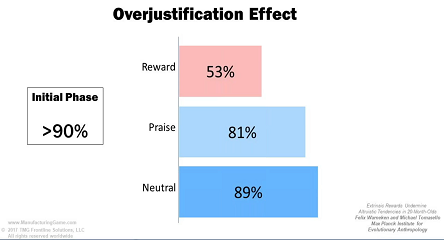10 Minute Talk
Real World Examples of Inventory Management
I reached out to several business owners and other consultants to get their real world perspectives on inventory management techniques in their own industries.
Real World Examples of Inventory Management
To gain some insights on how inventory management differs across industries, I reached out to both business owners and consultants in diverse industries to provide their own strategies for managing inventory in their industries.
I highlighted several responses below, but they all largely centered around the following ideas:
Automate with Software. Even for small businesses, it’s virtually impossible to manage stock levels without dedicated software.
Be Flexible. Be willing to quickly adapt your inventory strategy; some contributors needed to quickly revise their inventory strategy as a result of COVID-19 impacts.
Optimize Order Size. You may realize cost savings by committing to large purchase orders, although this only works if you have both the warehouse space and the certainty that you can eventually move the product.
With that introduction, please see below for select responses:
1. Optimize Order Size

Mike Falahee, Owner
Marygrove Awnings
In the awning business here at Marygrove we have room for months of overstock, which saves us the time of placing orders frequently and relieves any anxieties of ever running out of supplies. This also saves us money through getting a discounted price from suppliers for larger orders, and on shipping by filling up a truck.
Of course, this method isn’t for everyone. You have to consider the cost of building, buying, or leasing a space for overstock versus the money you will save. You may have to hire another employee to oversee this extra stock. Inventory software streamlines weighing all of these factors, and becomes necessary as you scale your business.
2. Responsive Planning Systems

Carlos Castelán,
Managing Director
The Navio Group
Inventory and supply chains all over the world have been turned upside down to the pandemic. One of the biggest lessons from this pandemic is that retailers need to have more dynamic demand planning and flexible supply chains. On the demand planning side, this means having systems that are able to update forecasting using many different data points in real-time as well as have the ability to apply machine learning.
Many retailers have gluts of inventory today that will be difficult to go through while simultaneously purchasing more seasonally relevant inventory for summer and fall. Developing supply chain capabilities that leaner from sourcing to fulfillment of customer orders will be critical going forward to be able to pivot quickly and react to shifting trends or rapidly changing demand, such as the pandemic.
3. Algorithms + Human Oversight

John Moss, CEO
English Blinds
We use a combination of algorithm-based prediction tools and human oversight to develop the insights we need to manage inventory and ensure we can meet demand without holding a surplus or getting stuck with seasonal or hard-to-move goods.
Initially we use stats to predict and suggest inventory levels (we’ve been in business since the 1980s and so we have a solid and stable core of data at the center of this to help us to forecast seasonal demand and identify trends and buying patterns) but the ultimate decision is made by leadership.
Because most of the component parts and materials we need to produce our goods are sourced in-country rather than imported, this allows us to keep less inventory on hand without running the risk of being hugely vulnerable to supply chain disruption than would be necessary if we relied heavily on overseas imports.
This is more costly, but of course during 2020 when the majority of our competitors, who rely more heavily on imports, were unable to meet demand due to supply chain disruptions, we were able to continue with business largely as usual and pick up trade from customers that our competitors were unable to serve.
4. Rely on Technology for Automation

Nishank Khanna, CFO
Clarify Capital
We advised our small business retailer client to invest in software for an automated inventory system. That way, availability of supply is always accurate and order fulfillments require less direct oversight and time investment.
Trusting tech to get the job done has allowed them to streamline ordering practices, which has reduced waste internally. Stock levels have been more on par with true demand as a result because there’s less guesswork involved at the end of the day.
5. Inventory Management Software

Jeff Roscher,
CEO/President
eWorkOrders
The goal of effective inventory management is to have the right stock, in the right place, at the right time, and at the right cost. Using a Computerized Maintenance Management System (CMMS) minimizes costs by helping facilities managers know when to purchase more inventory based on normal usage rates.
With CMMS Inventory Management software, you can set minimum and maximum inventory stock levels, so that when the minimum quantity is reached a Purchase Order will automatically be generated and sent to vendors for replenishment.
6. Pool Inventory

Rob Oglesby,
Senior Manager
Parker Avery
Making the decision to combine inventory into a global pool will generate rewards by providing significant flexibility—allowing the most profitable (or strategic) channel to be fulfilled, while reducing the overall investment by sharing the risk across all channels.
Much of the change entails the technical challenges including:
Combining once-segregated inventory into a single pool and possibly a new SKU methodology
Restructuring ordering systems to work more independently
Including a system to facilitate the allocation of inventory across varying channels, as well as full transparency and visibility
Wrapping it Up
As evidenced by the above responses, effective inventory management varies across industries – Some highly seasonal industries (such as residential awnings) may require large inventory builds in advance of the busy season. Larger corporations may benefit from pooling of inventory into homogenous pools of stock that can be sold across all their sales channels.
Whichever strategy you employ, realize that there is no one-size-fits-all approach – You need to define what works well for your business and industry. Then, align your software and process to match.
About the Author

Bryce Bowman
Bryce has over two decades of leadership roles in finance and supply chain. In his supply chain roles, he built reporting for multi-billion-dollar supply chains. As Division CFO, Bryce established reporting and controls for a multinational industrial business. Bryce now helps companies solve inventory issues through better planning.





